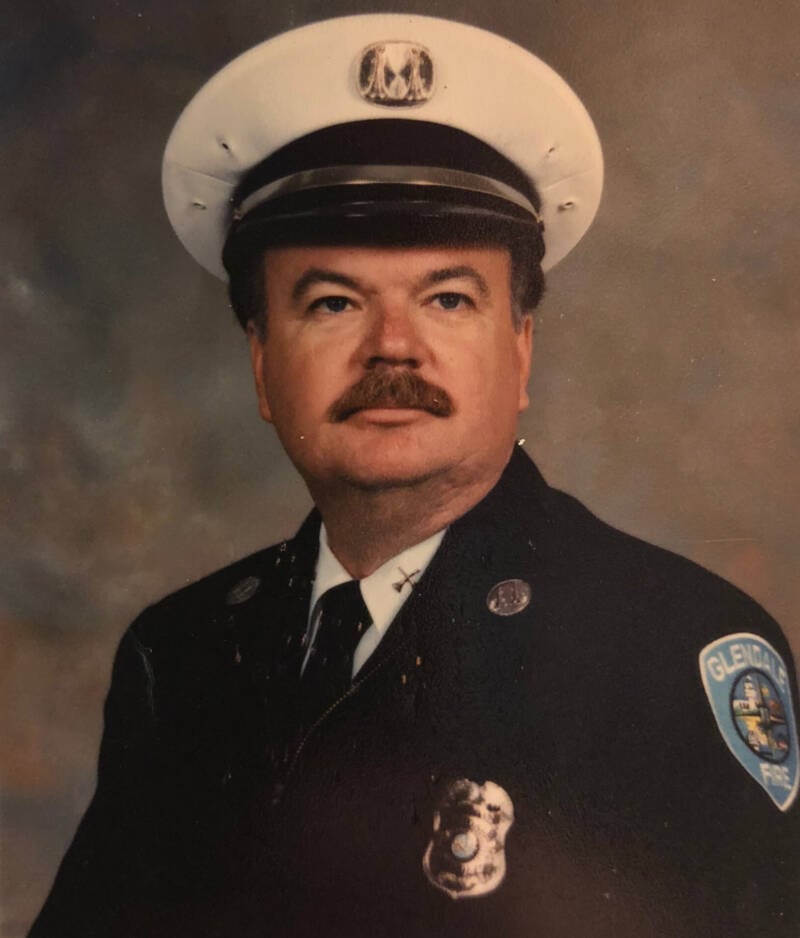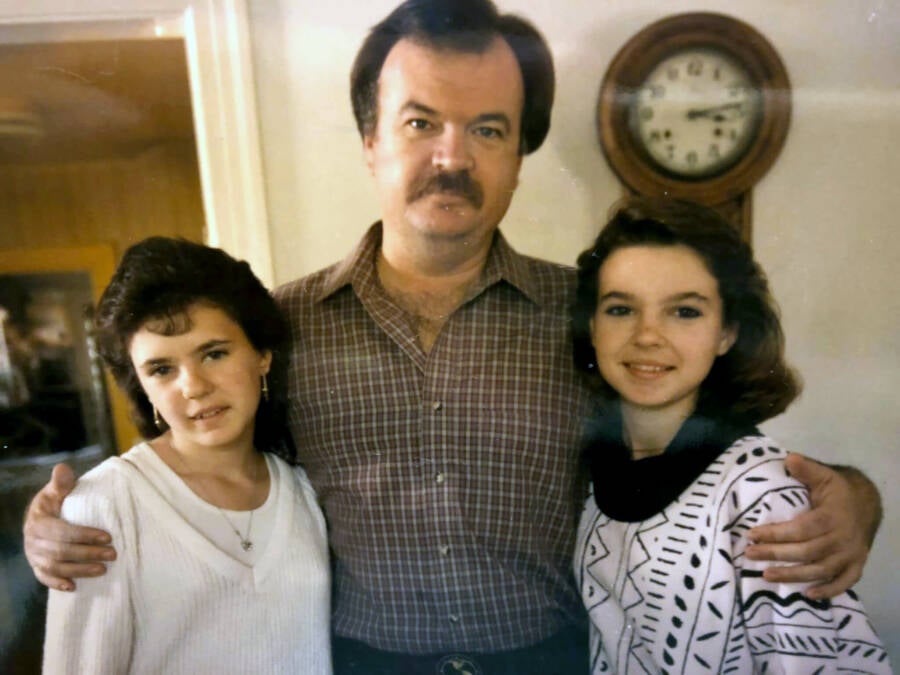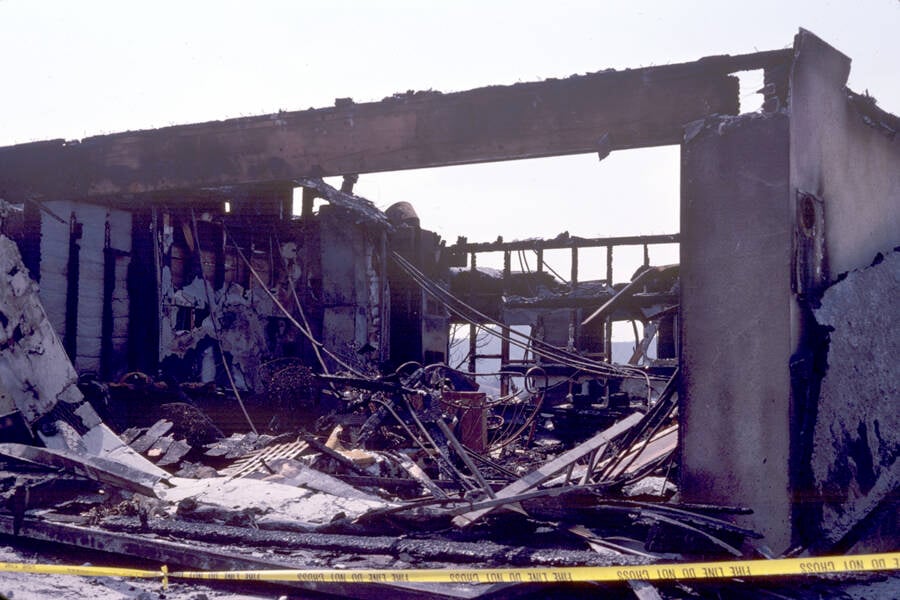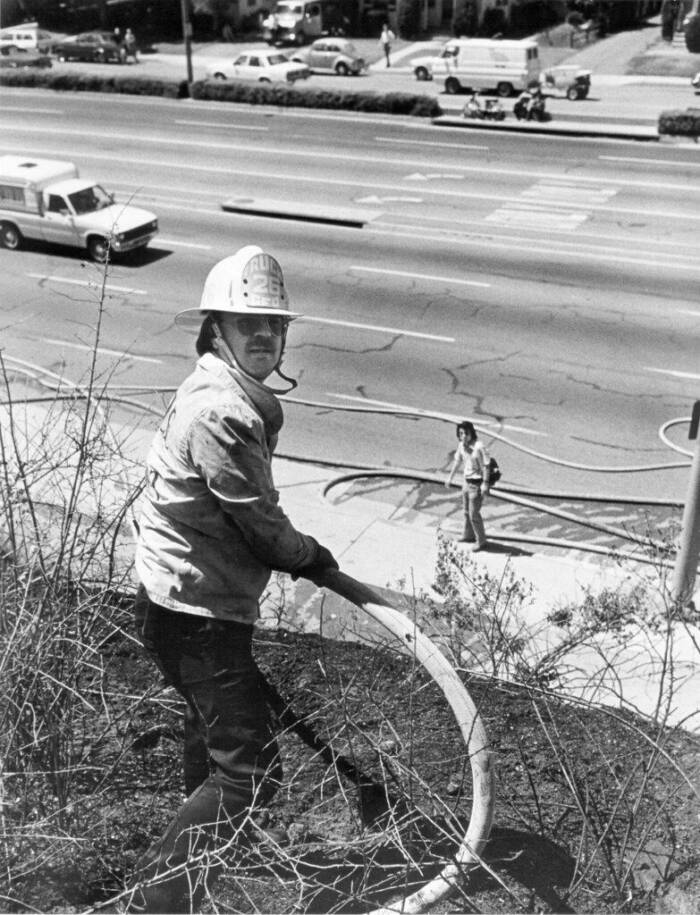John Orr is suspected of setting some 2,000 fires in the 1980s and 1990s in California, many of which he investigated as a fire captain and arson investigator.

Glendale Fire DepartmentJohn Orr was a firefighter for 17 years with the Glendale Fire Department.
By day, John Orr was a firefighter with the Glendale Fire Department. But by night, he was an aspiring novelist. He spent his time writing a book called Points of Origin, which centered on a firefighter named Aaron — who was secretly a serial arsonist who became sexually aroused by fire. Though the book was “fiction,” its narrative eerily mirrored some sinister truths about Orr’s own life.
Like “Aaron,” Orr was an arsonist who deliberately set hundreds of fires in California between 1984 and 1991. Often, he set these fires in stores during operating hours when he knew people would be inside, lighting them using a delayed incendiary device built with a cigarette, matches, and a piece of paper. And as an arson investigator, Orr responded to many of these fires himself.
Eventually, his fellow fire investigators realized that there was an arsonist in their midst, and Orr was arrested in 1991. But not before he’d set some 2,000 devastating fires across the state, killing four people, destroying dozens of homes, and causing untold destruction to property and nature across California.
This is the story of John Leonard Orr, the firefighter who was also one of the worst arsonists of the 20th century.
How John Orr Became A Firefighter
Born on April 26, 1949, John Leonard Orr had a fairly normal upbringing growing up in California. He excelled academically and joined the U.S. Air Force after finishing high school, and soon afterward married his high school girlfriend. By 1971, he had returned to Los Angeles, where he started looking for work as a firefighter or a policeman.
It wasn’t an easy journey. Orr applied to multiple police and fire departments in the area without success, and failed tests with both the Los Angeles Police Department and Los Angeles Fire Department. Along the way, his relationship with his wife began to deteriorate, even as they welcomed two daughters: Lori and Carrie.

Lori Orr KovachJohn Orr with his daughters, Lori, left, and Carrie, right.
Despite the difficulty, Orr was determined; he eventually decided to apply to the Glendale Fire Department. John Leonard Orr was hired in 1974, and soon became a captain and a fire investigator.
A few years later, the state seemed to suffer from an unusually high rate of arson attacks. During this time, fire captain John Orr emerged as a gifted investigator who was particularly skilled at sniffing out suspicious fires.
Little did anyone know, he was the one setting them in the first place.
The Pillow Pyro’s Eight Years Of Terror
The fires that raged across Southern California between 1984 and 1991 were frequently devastating, and sometimes deadly.
On Oct. 10, 1984, a fire broke out at Ole’s Home Center hardware store in South Pasadena that killed four people: 17-year-old Jimmy Cetina, 26-year-old Carolyn Kraus, 50-year-old Ada Deal, and Deal’s two-year-old grandson, Matthew Troidl.
According to Fire Lover by Joseph Wambaugh, a true account of the John Orr case, the fire at Ole’s Home Center began near a potato chip bag, which acted like “a sack of solid fuel.” It had been ignited by a cigarette, which burned down until it ignited a pack of matches and a sheet of paper.
That said, investigators originally believed it was an accident. It was John Orr, who also responded to the fire, who insisted that it must have been arson.
Before long, investigators began to notice a pattern: fires started by a delayed incendiary device composed of a cigarette, matches, and yellow paper. Such blazes — hundreds, if not thousands of them — continued over the next eight years.

Gedstrom/Wikimedia CommonsA home in Glendale destroyed by John Orr, who investigators knew as the “Pillow Pyro” or the “Frito Bandit” because he often set blazes in stores with bedding or using a bag of chips.
Some were set outdoors; many were set in stores like Ole’s. Some, like the College Hills Fire of 1990, which destroyed dozens of homes, were devastating in their breadth of damage; others, like a series of blazes that broke out near arson investigator conferences, offered disturbing clues about who might be behind them.
Indeed, investigators slowly became convinced that they had a serial arsonist on their hands, who they nicknamed the Pillow Pyro because of how he sometimes targeted shops with polyurethane bedding.
Because of the pattern of fires near arson investigator conferences, investigators began to suspect that the culprit was one of their own. But it took them a long time to get to Orr.
According to Wambaugh, investigators even discovered Orr’s fingerprint on a piece of evidence but initially dismissed it, with one investigator complaining: “You oughta tell your arson investigators to keep their mitts off the evidence. It was touched by John Orr’s left ring finger.”
And, indeed, Orr had a solid reputation among his fellow firefighters. He was often one of the first to arrive at the scene of a fire, and quickly took control of the situation.
“People looked up to him,” Tom Propst, who was fire-prevention inspector at the Glendale Fire Department in the 1990s, told Newsweek. “He always knew where the fire hydrants were… We just thought, ‘Wow, this guy has such knowledge.’ He was miraculously fast at finding the causes of fires. He could dig through the ashes, narrow it down and we’d be, like, ‘Man, you’re good.'”
But eventually, the investigation into the Pillow Pyro led straight to John Orr. Investigators put a tracking device on his car, which placed him at the scene of an arson. And his fingerprint on a half-burnt incendiary device all but assured his guilt. He was arrested in 1991.
Then, it came out that John Leonard Orr had also written a manuscript for a book called Points of Origin — about an arsonist firefighter named Aaron Stiles.
Points Of Origin And John Leonard Orr’s Conviction As A Serial Arsonist

Chris HumphreyJohn Orr at the scene of a fire. As an arson investigator, he often made the case that fires he investigated were deliberate, even when others initially assumed they were accidental.
Part of the case against John Leonard Orr was his “fictional” book, Points of Origin. At one point, he had described the manuscript to a literary agency as: “a fact-based work that follows the pattern of an actual arsonist that has been setting serial fires in California over the past eight years. He has not been identified or apprehended, and probably will not be in the near future… As in the real case, the arsonist in my novel is a firefighter.”
Within the novel, Orr often wrote scenes that appeared to mirror his actual crimes. For example, “Aaron” sets a fire at a hardware store called “Cal’s” that traps two employees and two civilians: a woman and her three-year-old grandson.
“The last thing she heard was a tremendous roar as the fire burned through the roof and vented to the outside,” John Orr wrote in Points of Origin. “The smoke momentarily lifted but was then replaced by solid fire as the entire contents of the annex exploded into flames. Their last breaths were of 800-degree heat that seared their throats closed.”
In Points of Origin — which Orr’s lawyers dismissed as “pornographic fiction,” per the California Sun — the Aaron Stiles character also seems to get sexually aroused by setting fires.
In one passage from the book, Orr wrote: “To Aaron, the smoke was beautiful, causing his heart rate to quicken and his breathing to come in shallow gasps. He was trying to control his outward appearance and look normal to anyone around him. He looked around and saw nothing, the lot was empty. He relaxed and partially stroked his erection, watching the fire.”
Ultimately, the book was just a small piece of evidence in the case against John Orr. According to a Los Angeles Times article from 1998, the evidence also included “40 videotapes and 70 audiotapes made at dozens of fires, communications with law enforcement authorities, queries to literary agents, and testimony from more than 100 witnesses.”
After being found guilty of arson in 1992 — and sentenced to 30 years in prison — Orr was also indicted on four counts of first-degree murder and 21 counts of arson in 1994. He was sentenced to life in prison.
Now, John Leonard Orr’s story has inspired the new Apple+ series Firebug. The show is loosely based on Orr, who one FBI investigator dubbed “probably the most prolific American arsonist of the 20th century.”
After reading about John Orr, go inside the tragic story of the Happy Land Fire, New York City’s deadliest arson attack which killed dozens of people partying at a Bronx social club. Or, learn about the mystery of the Hartford Circus Fire, the possible arson attack in 1944 that killed at least 167 people.





